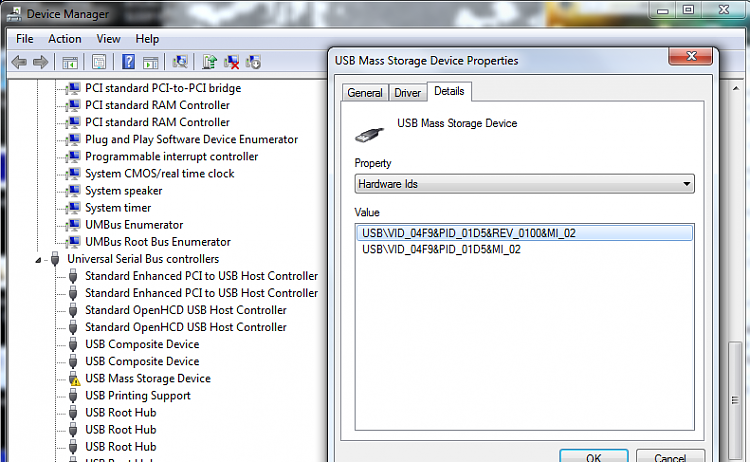Win98se Usb Mass Storage Drivers For Mac
USB flash drives and other USB mass storage based devices are becoming more and more common. Unfortunately, they often do not come with drivers because Windows Me, 2000, XP and Vista all come with generic drivers already installed. This way all you need to do is plug the drive in, Windows will recognise it and you will automatically see the drive in My Computer. Windows 98, especially in it's second edition (also known as Windows 98SE), handles USB fairly well, however there are no generic/universal mass storage device drivers preinstalled in the operating system, so you will need to install some additional drivers for it. Some manufacturers do however, provide the Windows 98 drivers on CD, others have them available to download, and others simply do not have them available at all.
If you are using Windows 98, and you do not know the manufacturer of the storage device, or you can't find the drivers, what can you do? Fortunately, there are some generic Windows 98 USB mass storage device drivers available that work with most such devices. This means that these drivers will work with many makes and models of the following:. USB Flash Drives (also known as Pen Drives, or Thumb Drives). Digital Photo and Video Cameras (that connect to the PC via USB). USB Hard Drives.
MP3 Players (including Apple iPod from v2.4). Sony PlayStation Portable (PSP) Installing the drivers.
Before installing the drivers, it is important to know that there are 2 main versions of Windows 98, and they both handle USB differently. You must install the appropriate version of the drivers dependent upon your version of Windows 98. In order to determine your Windows version, please do the following:. Right click on My Computer and select Properties. On the System Properties page that opens up click on the General tab, if it is not already on that page.
Under the System heading, look for the version number (see right). Version 4.10.1998 is the original version of Windows 98 (98FE). Version 4.10.2222 is Windows 98 Second Edition (98SE).
Click the link below for the download and installation instructions for your version of Windows 98 Download. These drivers include generic USB 2.0 controller drivers adding USB 2.0 support for computers that support it. To install the drivers. Download and install the (35.5Mb). Download to your desktop the driver file from the Download section below.
Remove ALL drivers for USB flash drives in Device Manager. Remove ALL drivers for any USB 2.0 controllers (many have an uninstall option). Remove ALL unknown devices from Device Manager. Run the exe file you downloaded, and follow the instructions, rebooting after installation.
When the computer boots up again, it may detect new USB 2.0 controllers, in which case you may need to reboot again Disclaimer. Version 3 of the drivers includes generic USB 2.0 controller drivers adding USB 2.0 support for computers that support it.
Sneeit Spot will help you changing settings, translating and updating your Blogger templates easily. I call it “Sneeit Spot”, a bookmarklet for dashboard of Blogger templates”. Your Blogger templates, of course, must be compatible with bookmarklet first, so you need to ask your author to confirm before using or you can read in your Blogger templates’s documentation to know if they support this stuff. Install Sneeit Spot Drag the bookmarklet below to your bookmarks bar of your browser. Then, when you’re on your template HTML editor, you just simply click it if you want to use Sneeit Spot to set up your Blogger templates. If you are not sure how to install, check below image for more information: Hold and drag the button to your bookmarks bar Or watching video below: Update Sneeit Spot Each time I release a new version, I will change the version text of the abovebookmarklet so you can compare that text with the bookmarkl. There is now a 4th option!

Patch Cleaner. I created this 100% free software.

Usb Mass Storage Device Driver
It cleans the windows installer directory with one easy click. If you don’t trust it, you can use the move action to move the orphaned files to another folder until you are satisfied it hasn’t done anything wrong. Windows Installer Directory When applications are installed and updated on the Windows Operating System a hidden directory 'c: Windows Installer' is used to store the installer (.msi) files and the patch (.msp) files. Generally these files are important as during updating, patching or uninstalling software it will use the.msi/.msp files. If you blanketly delete all the files in this folder, you will find yourself needing to rebuild windows. Over time as your computer is patched and patched again, these installer files become outdated and orphaned. They are no longer required, but they can take up many gigabytes of data.
PatchCleaner PatchCleaner identifies. I use local, the directory will be C: Users Username AppData Local Microsoft Windows WebCache. I would like to be able to stop this caching. Things I have tried. I have been successful at changing the security properties and disabled the inherence. Removed all users that were allowed to access webcache.dat. Deleted the log files in webcache folder Viewed the log caches and followed the links.
Usb Mass Storage Driver
Here is one of those links in the cache logs. After completing the above, I went back to the web doing this post. The system changed webcache to webcache.old folder and started a new webcache folder. How can I stop webcache?
Usb Storage Driver Window 10
Ok how can I stop MS from using my computer to cache to all the pages. Is this Microsoft way to use our bandwidth to share data between users. To find sujay tutorial search for, Windows – Continuous Disk Write + WebCacheV01.dat + V01.log – Issue Credits go to Suja.